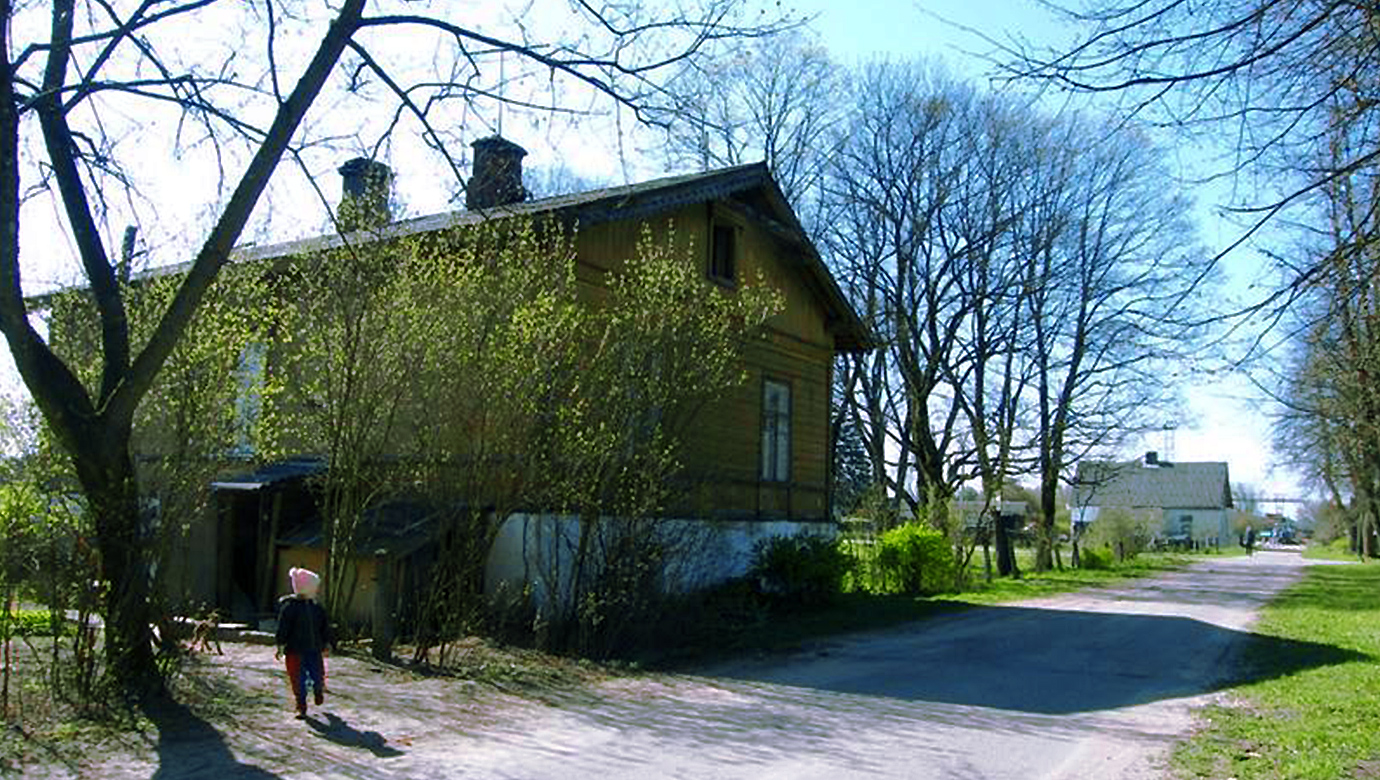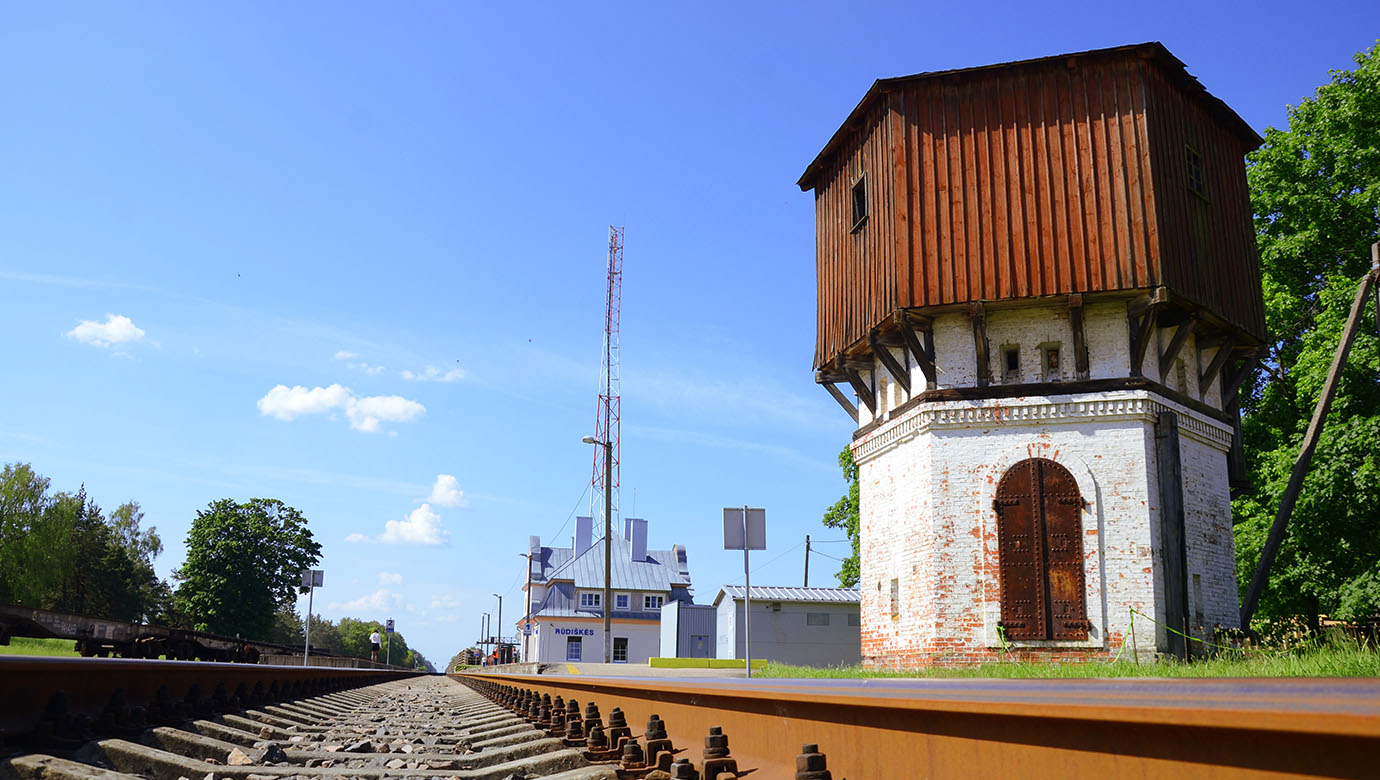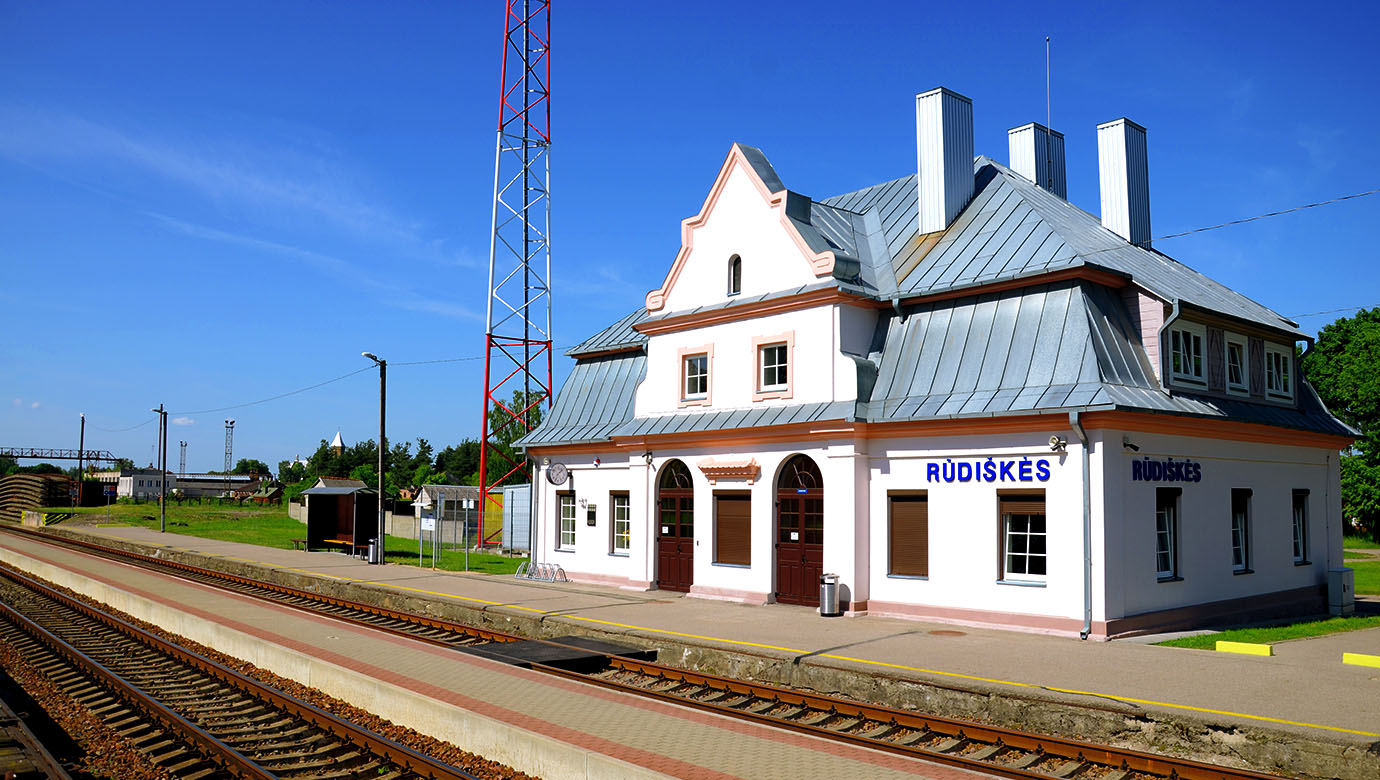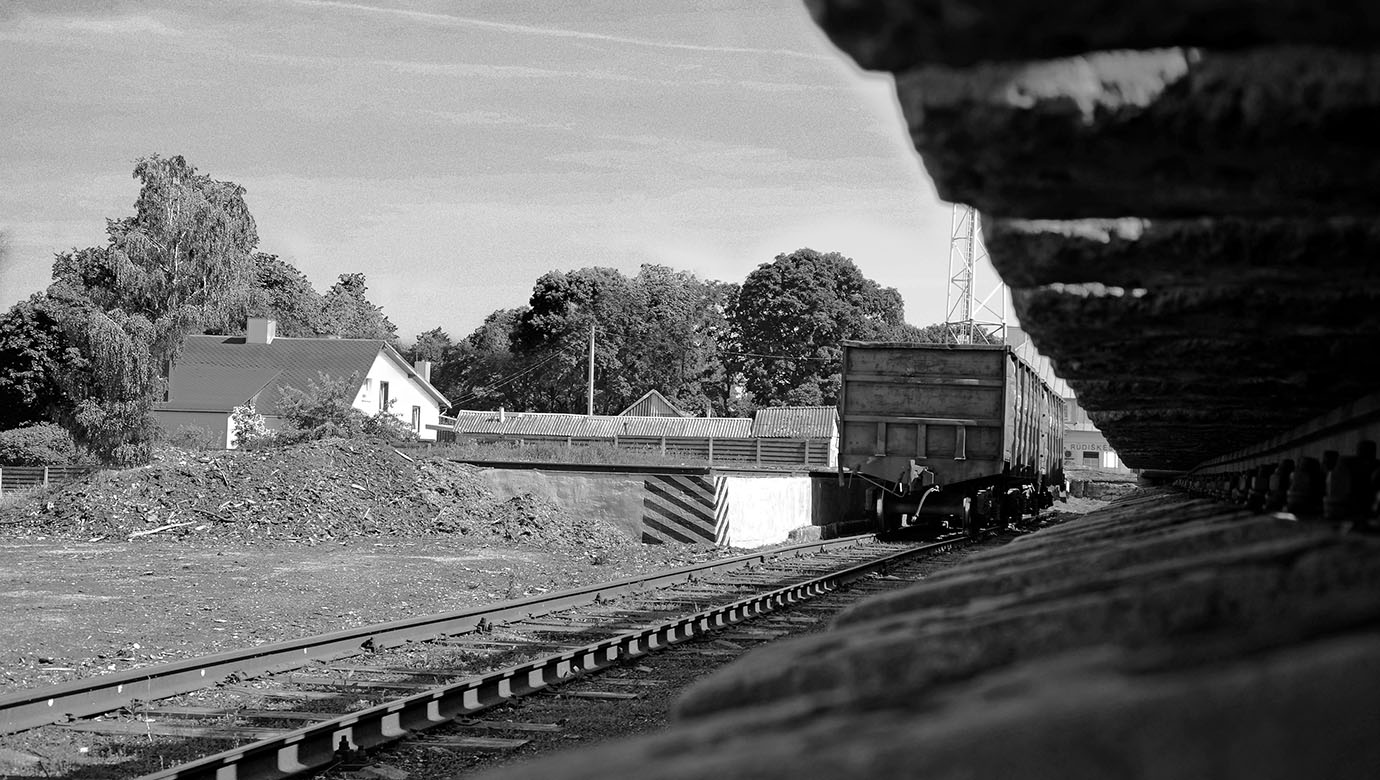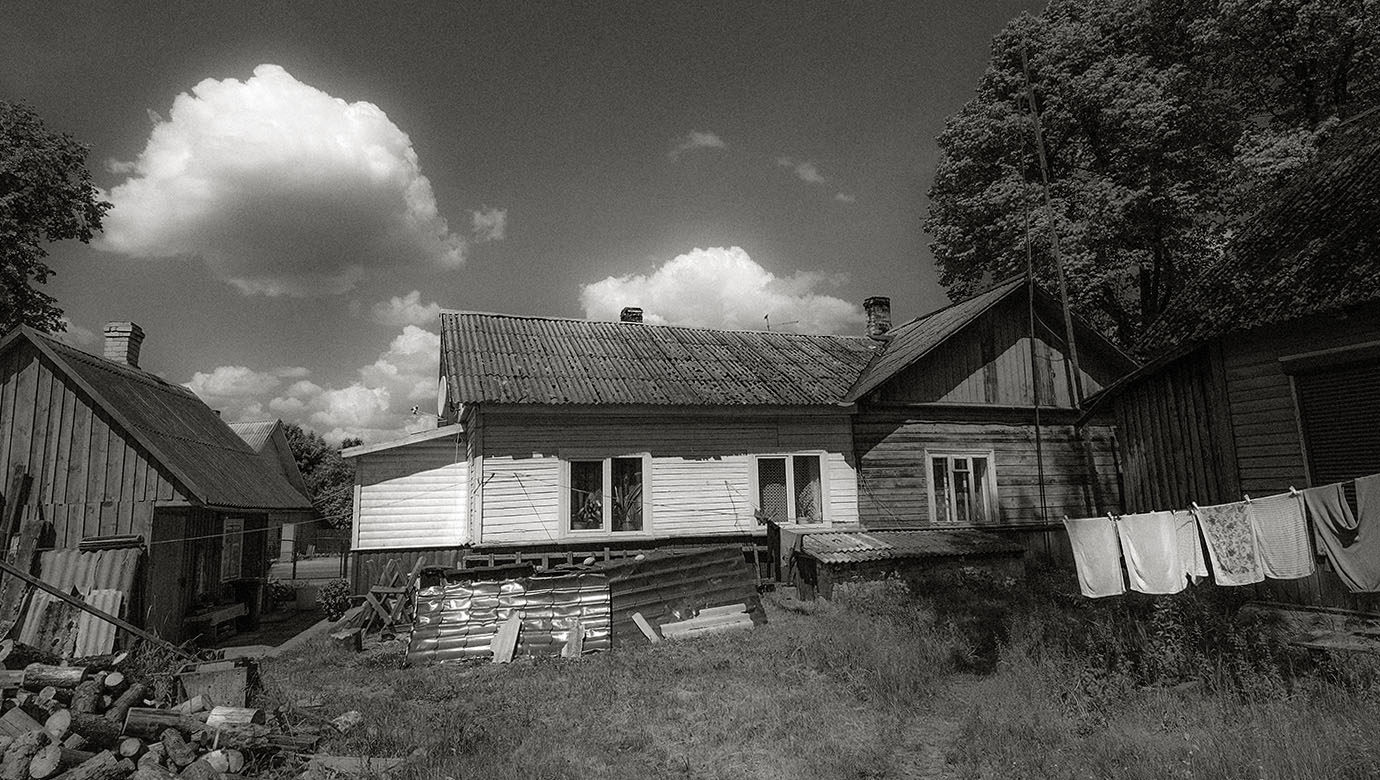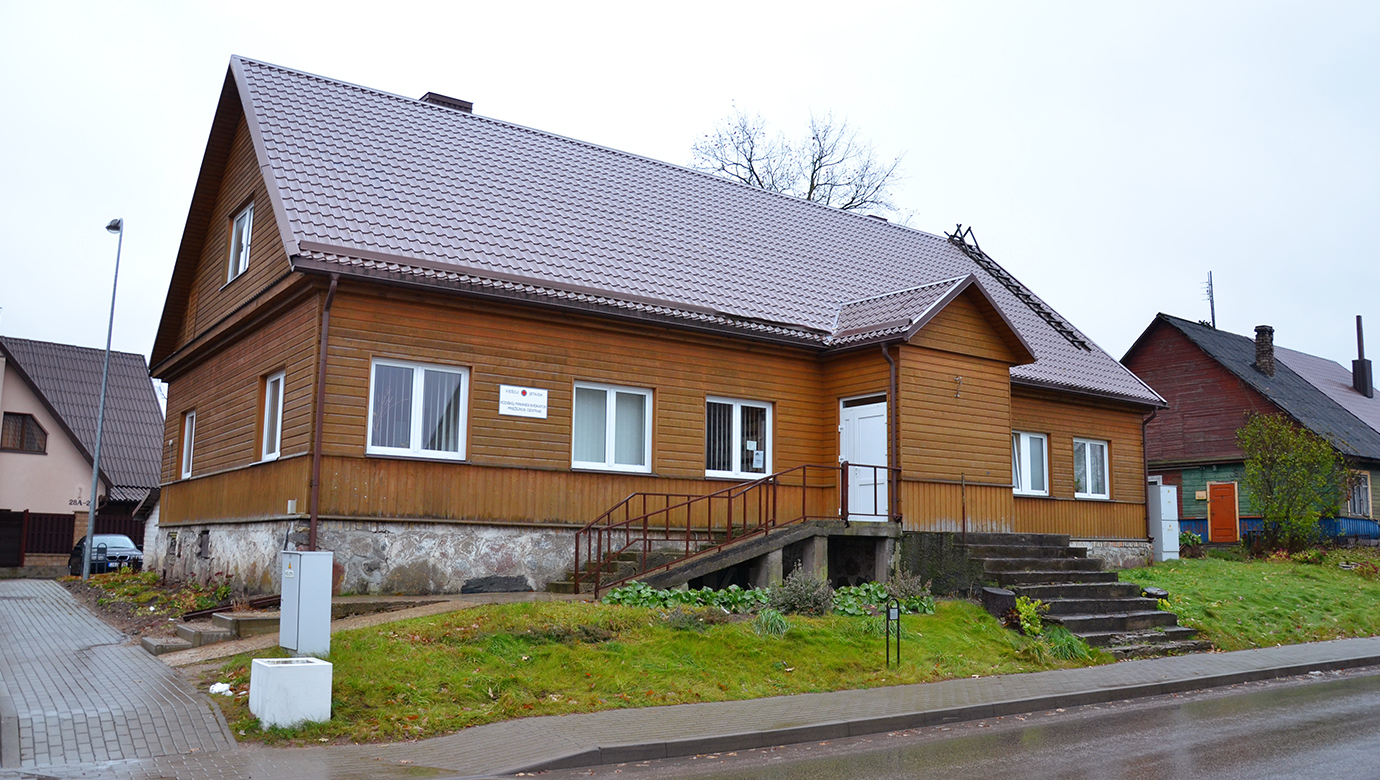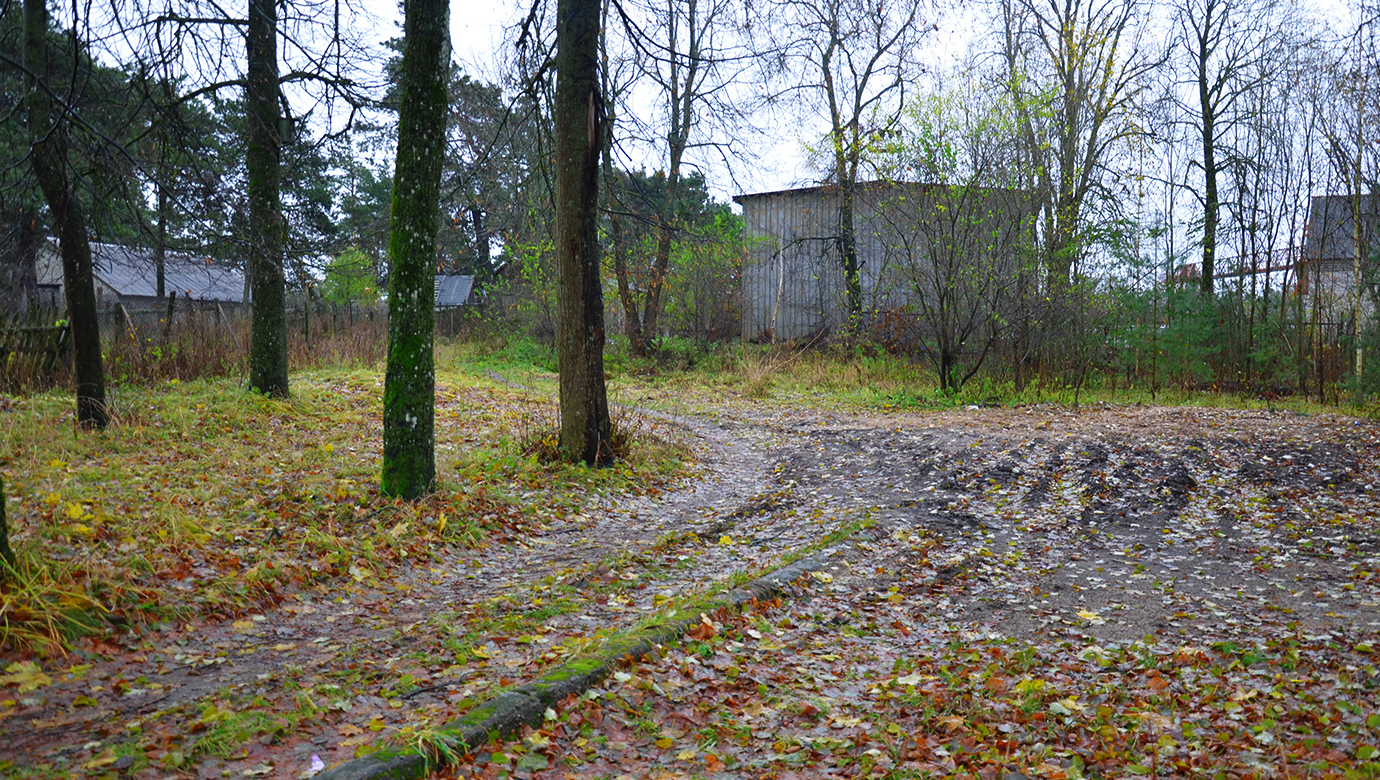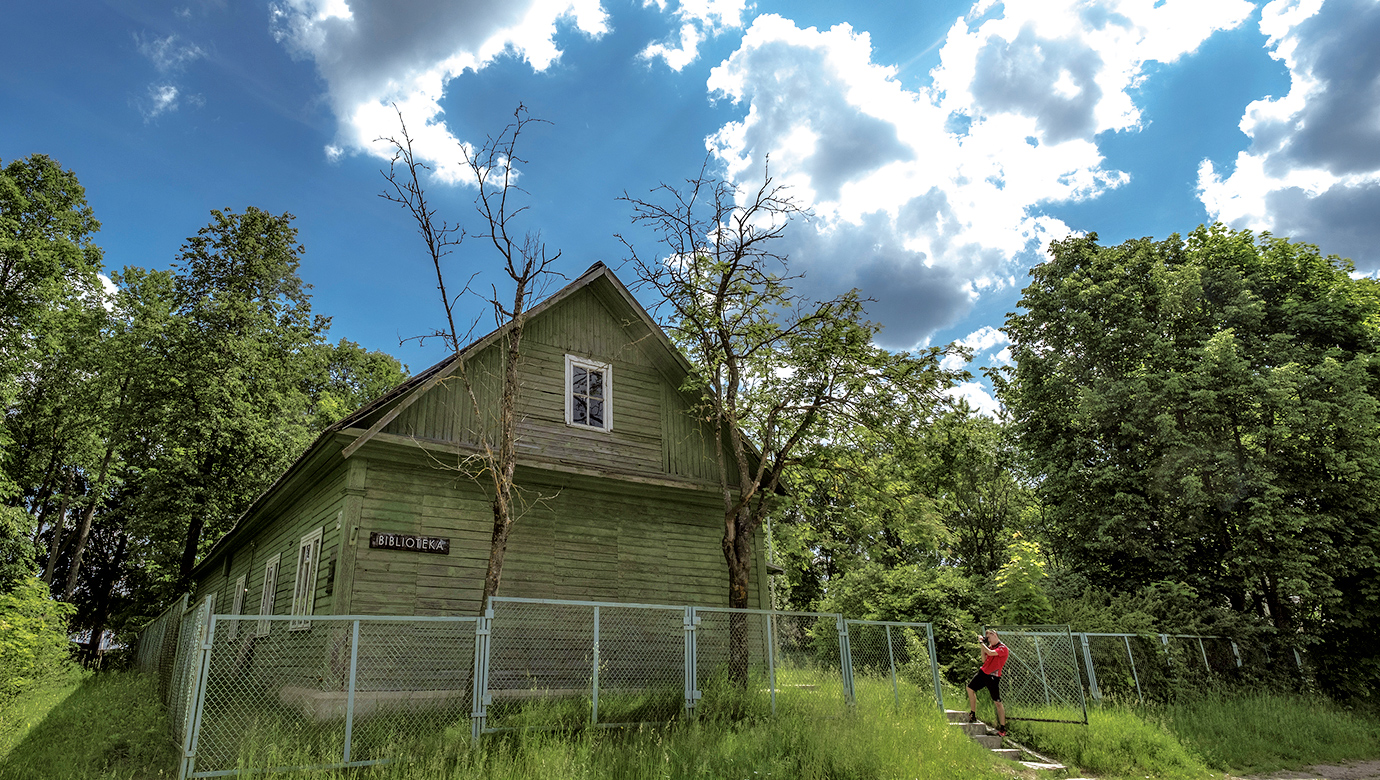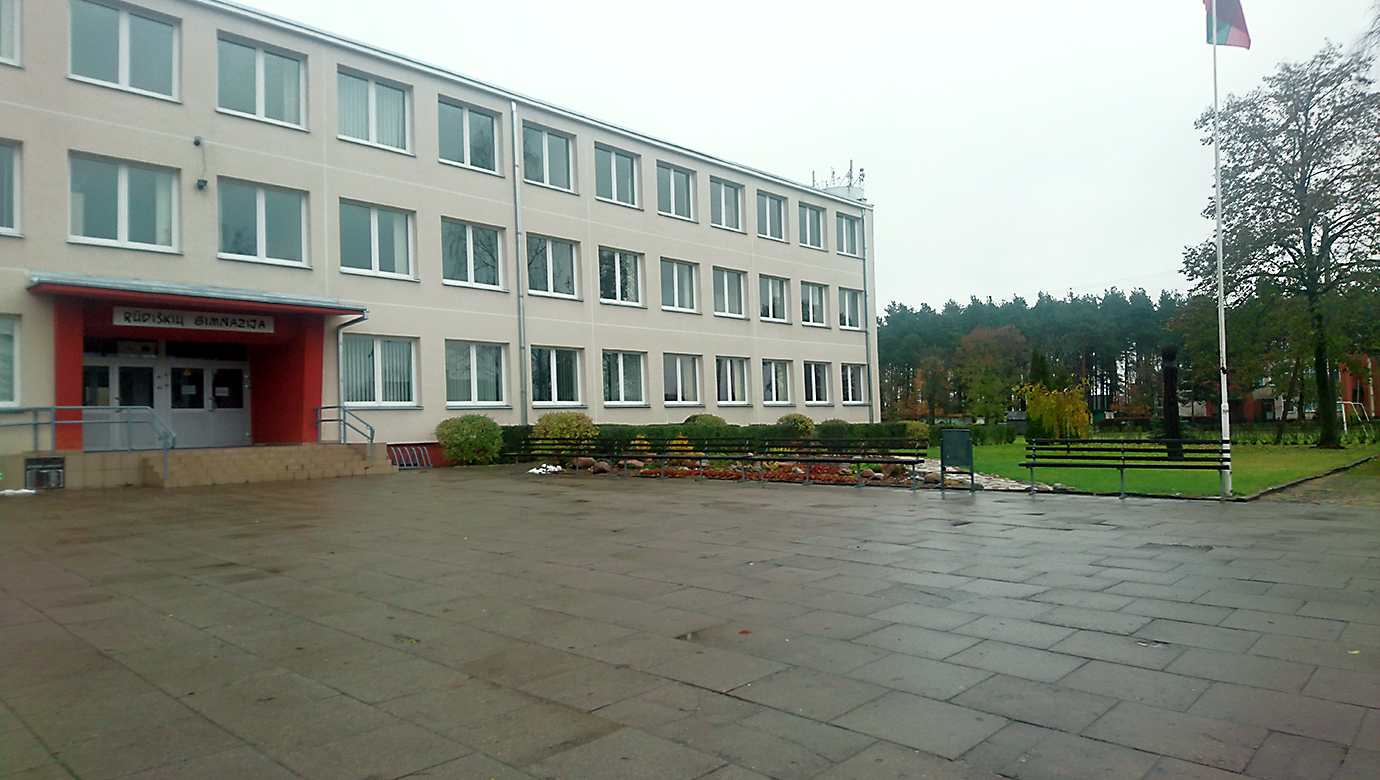Pasivaikščiojimas po Rūdiškes / A Stroll In Rūdiškes
Lietuvos geležinkelio, ūkio ir prekybos istorija
Geležinkelis pakeitė miškų apsuptyje, prie kelio iš Vilniaus į Karaliaučių įsikūrusio Rūdiškių kaimelio ir karčemos gyvenimą. 1861 m. rugsėjo 24 d. per Rūdiškės nudundėjo pirmasis garvežys, o nuo 1862 m. gruodžio 15 d. jau vyko nuolatinis traukinių eismas. Geležinkelis Sankt Peterburgas–Varšuva – tai vienas didžiausių ir brangiausių projektų carinės Rusijos istorijoje. Vienas šio geležinkelio varstas (apie 1,07 km) kainavo vidutiniškai 100 000 rublių!
Pirmieji Rūdiškių namai buvo mediniai, skirti geležinkeliečiams ir keleiviams. Verslą ir prekybą Rūdiškėse nuo pat pradžių į savo rankas paėmė žydai. XX a. trečiame dešimtmetyje maždaug 300 žydų bendruomenė vertėsi medienos prekyba ir medžio apdirbimu, turėjo dvi dešimtis parduotuvių: galanterijos, ūkinių ir maisto prekių, taip pat kepyklą, skerdyklą, teikė siuvėjo, batsiuvio, dažytojo, stiklininko, skardininko paslaugas. Šis Rūdiškių istorijos tarpsnis pasibaigė Antrojo pasaulinio karo pradžioje. Karui praūžus, Rūdiškių senamiestyje, tuščiuose žydų namuose, kūrėsi naujoji rūdiškiečių karta.
History of Lithuanian railways, economics and trade. A 1.3-kilometre walking route.
Along this route you will visit Rūdiškės train station – the beginning and the centre of the town. The railway changed life in the small village and its tavern which are in the midst of forests next to the Vilnius to Karaliaučius road. The first locomotive rattled though Rūdiškės on the 24th of September 1861, and from 15 December 1862 there was regular rail traffic. It was one of the biggest and most expensive projects of tsarist Russia – the railway line Sankt-Petersburg–Warsaw.
The first houses in Rūdiškės were constructed from wood. They were meant for railway staff and the fourth, later the third, class passengers of the train station. In 1862, a freight station and water tower (the locomotives were refilled with here) were completed, and three telegraph wires were installed. At that time the man in charge of buildings and the stretch of railroad in Rūdiškės was Julijanas Štompfas. In 1863, when the uprising started, the forest around the train station and railway was cleared due to security reasons; two barracks, a kitchen and a horse shed were built for the soldiers guarding the railway.
In 1894 the station already had a spacious house for passengers. It had eight furnaces, residential premises and a buffet. The platforms had wooden fences. The current train station building was constructed in 1929 and is representative of the historicism style.
From the beginning, business and trade in Rūdiškės were in the hands of Jews. In 1866 Israjelis Radunskis arrived in Rūdiškės from Butrimonys – the future owner of the teahouse next to the train station (Trakų str. 16). Blacksmith Iona Puckarnikas (Trakų str. 40) and construction contractor Šmujelis Kubickis (Gėlių str. 3) moved in about the same time.
In the 1920s, the Jewish community in Rūdiškės – consisting of about 300 people – owned 44 wooden houses and one brick (Trakų str. 28) building. They traded wood and had wood manufacturing businesses, owned about 20 shops that sold accessories, household goods and food. The community also owned a bakery and an abattoir; it provided sewing, shoemaking, painting, glasswork and tinning services. There was a youth drama class and an orchestra of wind instruments.
The traveller’s route in Rūdiškės continues a bit further away from the main street called Trakai, where the spacious wooden synagogue used to be. This is where the first Rūdiškės’ historic period ends. This is because on the 23rd of September 1941 all Jews from Rūdiškės were locked in the synagogue and the next morning they were sent by foot to Varninkai forest near Trakai and never came back. After World War II, the new generation settled down in the Jewish houses in the old town of Rūdiškės, where the second, third and fourth generations continue to live.
